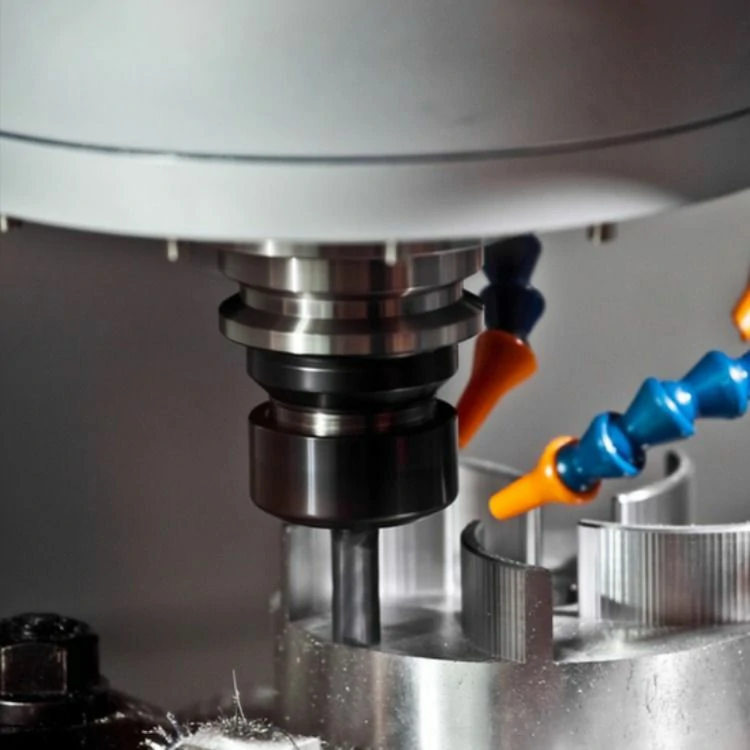The function of the coil in a wireless charger refers to a device that uses the principle of electromagnetic wave induction for charging, similar to a transformer. There is a coil at the sending end and a coil at the receiving end. The sending end coil is connected to a wired power supply, generating an electromagnetic signal. The receiving end coil senses the sending end electromagnetic signal, generating current to charge the battery. During system operation, the input terminal converts AC mains power into DC power through a full bridge rectifier circuit, or directly supplies the system with 24V DC power. The output DC power is converted into high-frequency AC power through a 2M active crystal oscillator inverter after passing through the power processing module, and supplied to the primary winding. By coupling the energy of two induction coils, the receiving conversion circuit converts the current output from the secondary coil into direct current to charge the battery.
Inductive coil current blocking effect: The self induced electromotive force in the inductive coil is always resistant to changes in current in the coil. Inductive coils have a blocking effect on AC current, and the magnitude of the blocking effect is called inductance xl, measured in ohms. Its relationship with inductance l and AC frequency f is xl=2 π fl, and inductors can be mainly divided into high-frequency and low-frequency resistance coils. Tuning and frequency selection function: The inductance coil and capacitor can be connected in parallel to form an LC tuning circuit. If the natural oscillation frequency f0 of the circuit is equal to the frequency f of the non AC signal, then the inductance and capacitance of the circuit are also equal. Therefore, electromagnetic energy oscillates back and forth in the inductance and capacitance, which is the resonance phenomenon of the LC circuit. During resonance, the inductance and capacitance of the circuit are equivalent and opposite, with the inductance of the total circuit current being the smallest and the current being the largest (referring to an AC signal with f=”f0″). The LC resonant circuit has the function of selecting a frequency and can select an AC signal with a certain frequency f.
Wireless charging coils can usually be used as current transformers, with wide frequency bands, small size, light weight, easy digital measurement, and microcomputer protection. Widely used in television technology, audio technology, communication transmission, reception, power filtering, VCD RF head, antenna amplifier, radio recorder, antenna microphone, and other fields. Wireless charging coils have appeared multiple times in our lives, with increasingly advanced technology and wider application fields. Self adhesive coils are widely used in common mode filters, multi frequency transformers, impedance transformers, balanced and unbalanced conversion transformers, suppression of EMI noise in electronic devices, USB lines for personal computers and peripheral devices, LCD display panels, low-voltage differential signals, car remote keys, and more. In the gradual development of the electronics industry, as a small member of the electronics industry, the wireless charging coil plays a significant role and is one of the indispensable components of many products. For example, an induction cooker, without the coil, cannot effectively maintain the color, aroma, taste, and nutrients of food. Therefore, this small thing, the coil, is indispensable for achieving kitchen modernization.
Coupling energy to charge the battery. The main feature of wireless chargers is 1. In theory, wireless charging technology is harmless to human safety. The resonance principle of wireless charging is magnetic resonance, which only transmits between resonance coils at the same frequency. Other devices cannot accept the frequency band. In addition, the magnetic field used by wireless charging technology is harmless to the human body. However, wireless charging technology is a new type of charging technology. The wireless charging coil manufactured by Jin Haode Inductor: 1. Multi core twisted, high power, strong heat removal, and not easy to heat; 2. High structural plasticity and easy installation; 3. Magnetic field aggregation to improve electromagnetic efficiency. Conversion rate has always been a concern for many people. The Massachusetts Institute of Technology has found that wireless charging technology consumes more energy than wired charging technology. The conversion rate of the wireless charging coil of Jinhaode Inductor is several percentage points higher than that of wired. High conversion is also an important factor in the application of wireless charging coils around the world.
The popularization of wireless charging technology can be said to benefit from the rapid development of the electric vehicle industry, as the problems of large land area, complex operation, and high wear rate of wired charging piles for electric vehicle charging have always plagued electric vehicle users. Inductive wireless charging technology has been successfully applied to some electric vehicle charging systems. The transmission system is buried below the ground, and the receiving coil is generally located in the car chassis. The transmission coil and the receiving coil undergo inductive coupling, equivalent to a separable transformer, which wirelessly transmits electricity through high-frequency electromagnetic fields between the coils. In order to improve the efficiency of the system, the first step is to achieve accurate measurement of the power of each part of the system. Measuring power naturally requires power analyzers. Currently, common power analyzers in the market face the following problems when measuring wireless charging systems. Failure to solve any of these problems can lead to inaccurate power measurement and even excessive efficiency.https://www.stoneitech.com/



